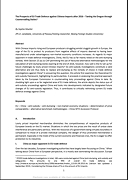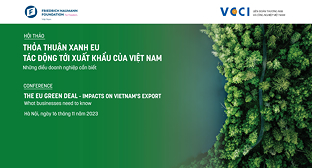The Prospects of EU Trade Defence against Chinese Imports after 2016 – Taming the Dragon through Countervailing Duties?
10/10/2015 12:00

Abstract
With Chinese imports rising and European producers struggling amidst sluggish growth in Europe, the urge of the EU to protect its producers from negative effects of imports deemed to having been manufactured under advantageous non-market economy conditions increases. As regards its major opponent in trade defence investigations, China, the EU has so far mainly relied on the anti-dumping remedy. With Section 15 (a) (ii) CAP permitting the use of favoured alternative methodologies for the calculation of anti-dumping duties expiring at the end of 2016, however, how well is the EU set up for future challenges by lowly priced Chinese imports? Do anti-subsidy investigations constitute a valid alternative and are thus likely to replace anti-dumping as the remedy of choice in trade defence investigations against China? In answering this question, this article first examines the theoretical EU anti-subsidy framework, highlighting its particularities. It proceeds in analysing the practical approach taken by the European Commission in countervailing duty proceedings against China to date. By shedding light upon a so far neglected area of EU trade defence, the article depicts the status quo of anti-subsidy proceedings against China and looks into developments indicated by designated future changes of EU anti-subsidy legislation. Thus, it contributes to critically rethinking current EU trade defence strategy against China.
By Sophia Mueller
(Ph.D. candidate, University of Passau/Visiting researcher, Beijing Foreign Studies University)
(Ph.D. candidate, University of Passau/Visiting researcher, Beijing Foreign Studies University)
| Tải tài liệu | |
|---|---|
| the-prospects-of-eu-trade-defence-against-chinese-imports | |
Các tin khác
- The Dispute Settlement Crisis in the World Trade Organization: Causes and Cures (16/03/2018)
- Modification of trade defence rules regarding non-market economy costs and prices (23/02/2018)
- Research Paper: Options for Disciplining the Use of Trade Remedies in Clean Energy Technologies (03/08/2017)
- Addressing the rise of Trade Remedies against Environmental Goods (03/08/2017)
- Anti-dumping Retaliation - —A Common Threat to International Trade (15/11/2016)
 Home
Home
 About Us
About Us




















